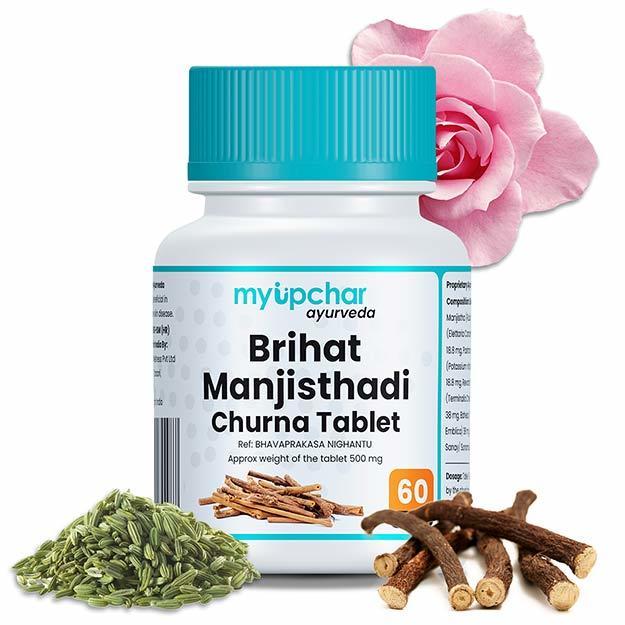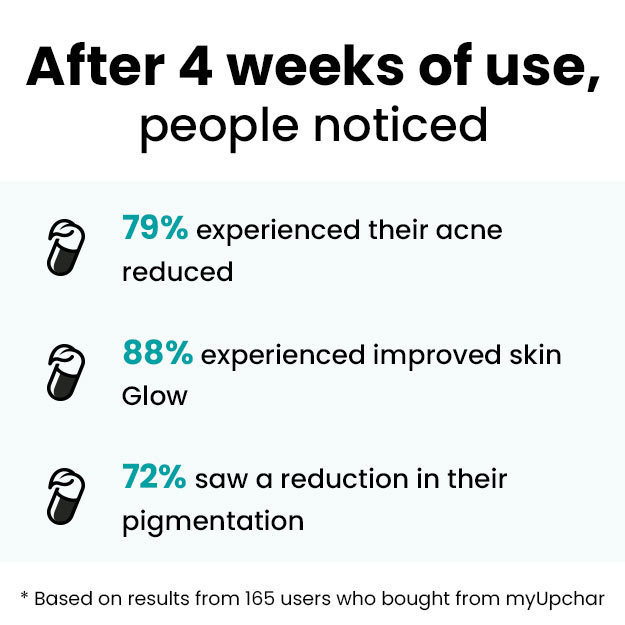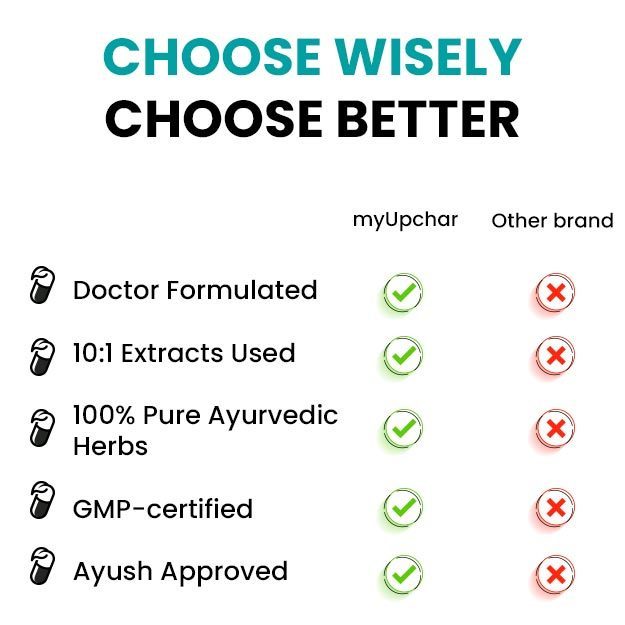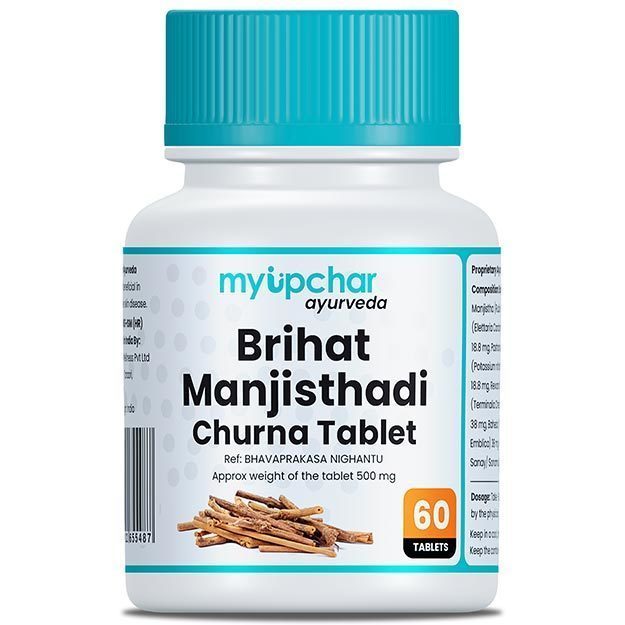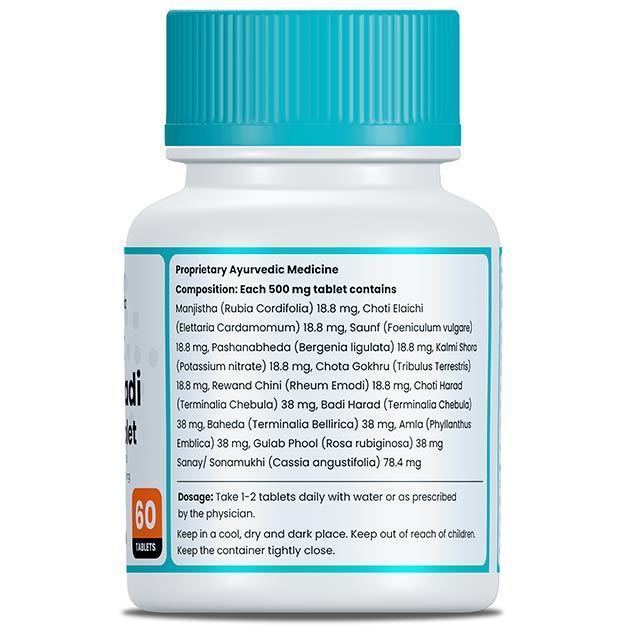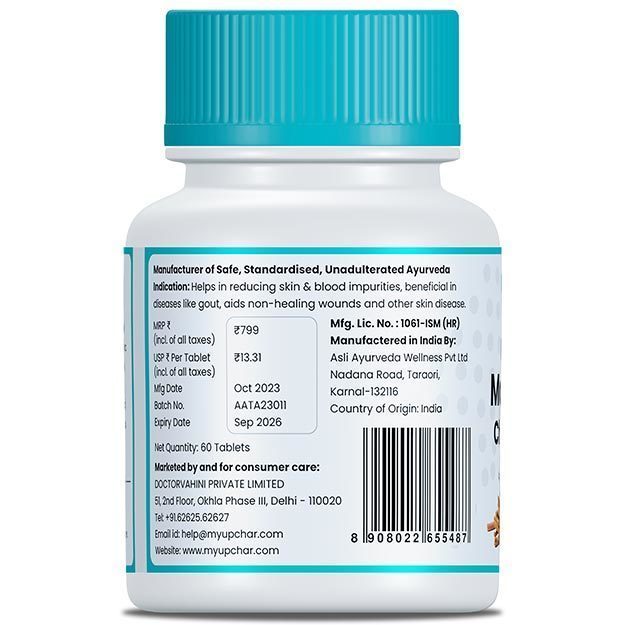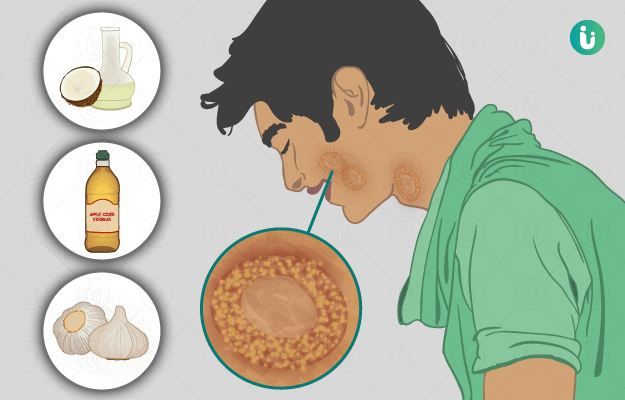Fungal infections are one of the most common types of infections in the world. These occur due to growth and spread of certain fungi on body tissues. Common pathogenic fungi include Aspergillus, Blastomyces, Candida, Coccidioides, Cryptococcus neoformans, Cryptococcus gattii and Histoplasma. They may affect different parts of the body such as eyes, ears, gastrointestinal tract, vagina, mouth, throat, toenails, fingernails, lungs and skin.
To know an Ayurvedic treatment for fungal infection please click on the link given here.
Some of the Ayurvedic herbs and medicines used for the treatment of fungal infections include, rasonam (garlic), adraka (ginger), yashtimadhu (mulethi), ashwagandha (Indian ginseng), neem, tulsi (holy basil), haridra (turmeric), vasa (Malabar nut), hinguliya manikyarasa, dadrughni vati, chandraprabha vati, arogyavardhini vati, kaishora guggulu and gandhak rasayana. Therpies such as vamana (medical emesis) and lepa (coating the affected body part with medications) are also effective in the management of fungal infections.
- Ayurvedic view of fungal infections
- Ayurvedic remedies for fungal infections
- Ayurvedic herbs and medicines for fungal infections
- Dietary and lifestyle changes for a patient with fungal infections as per ayurveda
- How effective are ayurvedic medicines and treatments for fungal infections
- Side effects and risks of ayurvedic medicine and treatments for fungal infections
- Takeaway
Ayurvedic view of fungal infections
Ayurveda does not treat fungal infections as a separate category of diseases but has included them along with other conditions of each system, e.g., fungal skin infections are included in kushtha roga (skin diseases). As per Ayurveda, consumption of incompatible food combinations, newly harvested foods and heavy meals are some of the factors that cause vitiation of all three doshas and lead to skin diseases. Numerous disorders of skin are listed under this category and classified into 18 subcategories. These 18 types of skin diseases are further classified as maha kushtha (major skin ailments) and kshudra kushtha (minor skin ailments). Some of the common fungal diseases of the skin include- dadru (ringworm) and alasa (athlete’s foot).
Dadru is classified as maha kushtha by Acharya Sushruta and kshudra kushtha by Acharya Charaka. It is a condition caused by vitiation of all three doshas with predominant vitiation of kapha and pitta. Alasa is classified as kshudra kushtha by Acharya Charaka and is a fungal infection of the skin caused by predominant vitiation of vata and kapha doshas.
Ayurvedic remedies for fungal infections
- Vamana
- Vamana is a panchakarma (five therapies) procedure, in which, various herbs are administered orally to induce vomiting.
- Two types of herbs are used to induce vomiting in vamana therapy. These include- vamaka herbs and vamanopaga herbs.
- Vamaka herbs help induce vomiting, e.g., vacha (calamus) and yashtimadhu, and vamanopaga herbs enhance the effects of vamaka herbs, e.g., neem and amalaki (Indian gooseberry).
- Vamana karma is used to cleanse the stomach and eliminate toxins and mucus from the circulatory channels and chest.
- It is effective in treating diseases of lungs such as pulmonary tuberculosis, viral infections, fungal infections, filariasis, and tumour.
- Lepa
- Lepas are topical applications prepared from single herbs or polyherbal formulations.
- Herbs for lepa are chosen on the basis of individual condition and made into a paste-like formulation using ingredients like ghee (clarified butter).
- Some of the lepas for treating ringworm are prepared from:
- Bark of shigru (drumstick) prepared in radish juice.
- Manjishtha (Indian madder), lac, haridra, gandhak (brimstone), triphala (a combination of amalaki [Indian gooseberry], vibhitaki [belleric myrobalan], and haritaki [chebulic myrobalan]) prepared in mustard oil.
- Chakramarda (foetid cassia) prepared in radish juice.
- Vidanga (false black pepper) seeds, mustard, chakramarda, root of kushtha (costus) and rock salt in sour curd.
- Durva (doob grass), the rind of haritaki fruits, seeds of chakramarda, tulsi leaves, and rock salt prepared in buttermilk.
Ayurvedic herbs and medicines for fungal infections
Ayurvedic herbs for fungal infections
- Rasonam
- Rasonam acts on the circulatory, digestive, nervous, reproductive, and respiratory systems, and it has anthelmintic, antiparasitic, expectorant (expels phlegm), carminative (relieves flatulence), disinfectant, rejuvenating, and stimulant properties.
- It acts as a detoxifier and clears ama (toxins) from blood and lymph.
- The antiseptic properties of this herb are helpful in treating lung and skin infections. It is also effective in the management of vata fever.
- Soaking your feet in garlic infused water can help treat fungal infections of the feet such as athlete’s foot. Garlic steeped in olive oil can be applied directly to the infected area to suppress the growth of fungi.
- Adraka
- Adraka acts on digestive and respiratory systems and has pain-relieving, aromatic, carminative, expectorant, and nervine (relieves stress) properties.
- It is considered as a universal medicine as it can treat disorders of all three doshas.
- It can be used in combination with various herbs, depending on the disease condition.
- Adraka increases digestive fire, thereby promoting digestion. It balances vitiated vata and lowers aggravated kapha.
- Caprylic acid, which is one of the constituents of ginger, is a potent antifungal agent.
- Ginger can be used in the treatment of fungal infections by boiling it in water and washing the affected areas with this water.
- Yashtimadhu
- Yashtimadhu acts on the digestive, nervous, reproductive, respiratory, and excretory systems and relieves inflammation and irritation. It has rejuvenating, expectorant, sedative and tonic properties.
- It cleanses kapha from lungs and stomach and heals ulcers and inflammation.
- Mulethi purifies blood and clears ama from the body. It is also useful in treating fatigue and abdominal pain.
- It has numerous antifungal phytoconstituents, which make it effective in the treatment of fungal infections.
- Yashtimadhu can be used in combination with ginger or can be boiled separately in water.
- It can be used in the form of a decoction, milk decoction, powder or ghee.
- Haridra
- Haridra acts on the circulatory, digestive, urinary, and respiratory systems and has antibacterial, anthelmintic, carminative, stimulant, and wound-healing properties.
- It improves blood circulation and blood tissue formation and acts as a natural antibiotic for the intestinal flora.
- It can treat psoriasis, acne and inflammation and is also helpful in the management of many fungal infections.
- Haridra can be used in the form of infusion, milk decoction, decoction and lepa.
- Neem
- Neem acts on the circulatory, digestive, respiratory, and urinary systems and has soothing, anthelmintic, antiseptic, antiviral, disinfectant, insecticidal, and stomachic properties.
- It purifies the blood and expels toxins from the body, thereby reducing fungal growth.
- It is helpful in the treatment of eczema, ulcers and numerous other skin diseases.
- It can be used in the form of infusion, decoction, or medicated ghee or oil.
- Ashwagandha
- Ashwagandha acts on the nervous, reproductive, and respiratory systems and has rejuvenating, anti-inflammatory, sedative, aphrodisiac, tonic and astringent properties.
- It is one of the main immune-boosting herbs that are used in the management of candidiasis, one of the most common fungal infections affecting individuals with weak immunity.
- Ashwagandha relieves pain and fatigue, promotes tissue healing, and is effective in the management of arthritic swellings and inflammations.
- It can be taken in the form of a decoction, ghee, powder or herbal wine.
Explore Ashwagandha for potential natural support against fungal infections.Order now for wellness Urjas Ashwagandha Tablet by myUpchar Ayurveda
- Tulsi
- Tulsi acts on the digestive, nervous, and respiratory systems and has antibacterial, antiseptic, antispasmodic, and pain-relieving properties.
- It improves oxygenation in body and has a cleansing effect on the circulatory and nervous system, which makes it an effective therapy for fungal infections.
- Tulsi also improves digestion and destroys ama.
- It can be used in the form of an infusion, juice, ghee or powder.
- Vasa
- Vasa acts on the respiratory, circulatory, nervous, and excretory systems and has antispasmodic and expectorant properties.
- This herb primarily acts on the respiratory system and is useful in the treatment of conditions like asthma, cough, tuberculosis and bronchitis.
- It is hghly effective in treating fungal infections and can be used as a repellent for mosquitoes, fleas and other insects.
- Vasa is also used for the management of kapha disorders and influenza.
- It can be used in the form of an infusion, decoction, extract, poultice or powder.
Ayurvedic medicines for fungal infections
- Hinguliya manikyarasa
- Hinguliya manikyarasa is prepared from purified hingula (cinnabar), gandhak, haritala (yellow orpiment) and juice of palash (flame of the forest) flowers.
- The herb haritala in this medicine has antimicrobial and antifungal properties against species such as Staphylococcus aureus and Candida albicans. Consequently, this medicine is useful in the treatment of vaginal yeast infections like candidiasis.
- Dadrughni vati
- It is a tablet-like formulation with chakramarda as its primary constituent.
- It is one of the best antifungal Ayurvedic medicines and is useful in the management of all types of skin infections including ringworm, and white spots.
- Chandraprabha vati
- This medicine has 42 ingredients, which include shatavari (hundred roots), rock salt, trikatu (a combination of the three acrids – pippali [long pepper], shunthi [dried ginger] and maricha [black pepper]), triphala, bhringraj (bhangra) and guggulu (Indian bdellium tree).
- It is used as a preventive medicine to reduce post-surgical complications in individuals with urogenital diseases.
- This medicine treats fungal infections of the urinary system and other urogenital problems including dysuria, urinary incontinence and haematuria (blood in the urine).
- You can take Chandraprabha vati with milk, honey or as per your doctor’s direction.
- Arogyavardhini vati
- Arogyavardhini vati is a well-known and extensively used Ayurvedic medicine indicated in the management of skin diseases.
- It consists of several ingredients including trivrit (Indian jalap), neem, triphala, abhraka bhasma (calcined preparation of mica) and tamra bhasma (calcined preparation of copper).
- These ingredients of arogyavardhini vati have pitta virechana (elimination of pitta through faeces), vata anulomana (pacification and regulation of vata) and kapha shamana (pacification of kapha) properties.
- It also has deepana (hunger-increasing), medohara, pachana (digestive) and tridosha shamaka (tridosha-pacifying) effects on the body.
- Arogyavardhini vati helps in the alleviation of aggravated doshas and aids in various purification procedures.
- Kaishora guggulu
- Guggulu (Indian bdellium-tree), guduchi (heart-leaved moonseed) and triphala are the primary constituents of kaishora guggulu. This medicine destroys increased pitta and purifies blood.
- It treats all types of skin diseases including fungal infections and also enhances the lustre of skin.
- Gandhak rasayana
- Gandhak rasayana is a polyherbal formulation prepared from purified gandhak, cow's milk, and a decoction of twak (cinnamon), ela (cardamom), nagakesara (Indian rose chestnut), triphala, shunthi, juice of guduchi, bhringraj (bhangra), adraka and various other ingredients.
- This medicine is commonly used in the treatment of fungal infections caused by Candida albicans.
As treatments vary based on numerous factors and an individual’s prakriti (constitution), consult a qualified Ayurvedic doctor for the appropriate medications and treatments for your specific complaints.
Dietary and lifestyle changes for a patient with fungal infections as per ayurveda
Do’s
- Wear loose-fitting and clean clothes.
- Maintain good personal hygiene.
- Change your clothes twice a day.
Don’ts
- Do not suppress natural urges like the urge to eat, drink, urinate or evacuate the bowels.
- Do not drink chilled or cold water immediately after physical activity or exposure to sunlight.
- Do not eat incompatible food combinations like fish and milk.
- Do not overeat or eat foods that are difficult to digest.
- Do not eat contaminated food items.
- Avoid eating excessively salty or acidic food items.
- Avoid sleeping during the daytime.
How effective are ayurvedic medicines and treatments for fungal infections
In a case study, a 55-year-old man with ringworm was treated with oral arogyavardhini vati and kaishora guggulu, both 500 mg twice a day, along with a topical application of marichadi taila.
Dietary and lifestyle modifications like avoiding incompatible food combinations and maintaining personal hygiene were also recommended. Symptoms were observed before and after treatment, and significant improvement was reported in itching, burning sensation, erythema, dry skin, and eruptions suggesting the efficacy of Ayurvedic therapies in fungal infections like ringworm.
Side effects and risks of ayurvedic medicine and treatments for fungal infections
Ayurvedic treatments, herbs and medicines have been used to treat many conditions since ancient times. Although they are are made of completely natural substances, some necessary precautions needed to be taken avoid side effects of ayurvedic medicines, e.g.,
- Vamana is contraindicated in pregnant women, children, elderly, weak individuals and individuals with high blood pressure and heart problems
- Haridra is not advisable in individuals with acute jaundice and hepatitis
- Neem is not recommended for emaciated individuals
- Ashwagandha should not be taken in chest congestion
- Tulsi should be taken with caution in individuals with excess pitta.
Takeaway
Fungal infections are commonly seen as skin conditions; however, in those who have a weak immunity, such as in case of AIDS or cancer or those who have had an organ transplant, these infections can occur as systemic conditions. Conventionally, antifungal drugs are used for suppressing fungal growth to resolve fungal infections. Ayurvedic treatment of fungal infections aims at strengthening the immune system and treating the causative factors by clearing toxins and balancing vitiated doshas.
Find Ayurvedic Doctor in cities
Doctors for Ayurvedic remedies for Fungal Infections

Dr. Ayush Bansal
Ayurveda
2 Years of Experience

Dr. Megha Sugandh
Ayurveda
6 Years of Experience

Dr. Nadeem
Ayurveda
3 Years of Experience

Dr.Ashok Pipaliya
Ayurveda
12 Years of Experience
References
- Center for Disease Control and Prevention [internet], Atlanta (GA): US Department of Health and Human Services; Types of Fungal Diseases
- Ramanjeet Kaur et al. Review on antifungal activities of Ayurvedic Medicinal Plants. Drug Invention Today 2009, 2(2),146-148.
- Prasanna Kumar, Vijay Kumar, Yumnam Dhanesori Devi. In-Vitro Antifungal Activity Of Gandhaka Rasayana. International Journal of Ayurvedic Medicine, 2010, 1(2), 93-99.
- Dr.Dhanya K Anto, Dr.Acharya MV. [link]. International Journal of Medical and Health Research, Volume 2; Issue 5; May 2016; Page No. 21-22.
- National Center for Complementary and Integrative Health [Internet]. Bethesda (MD): U.S. Department of Health and Human Services; What the Science Says About the Effectiveness of Ayurvedic Medicine
- National Institute of Indian Medical Heritage (NIIMH). Dadru. Central Council for Research in Ayurvedic Sciences (CCRAS); Ministry of AYUSH, Government of India.
- Raman Kaushik, Pragya Sharma. Ayurvedic Management Of Dadru Kustha Vis-À-Vis Tineacorporis : A Case Study. International Case Report International Ayurvedic Medical Journal, Vol.4 Issue 11; November- 2016.
- Vaidya Y.G. Joshi. Ayurvediya (Ayurveda) Sarirakriya Vivnana. Chaukhambha Visvabharati; 2010 edition.
- Vaidya Vasant Patil. Diagnosis and Management of Tvak Vikaras in Ayurveda . Conference Paper. Agnivesha Ayurveda Anushthan, Banglore. August 2016, DOI: 10.13140.
- Oushadhi. Gulika & Tablets. Govt of Kerala. [Internet]





